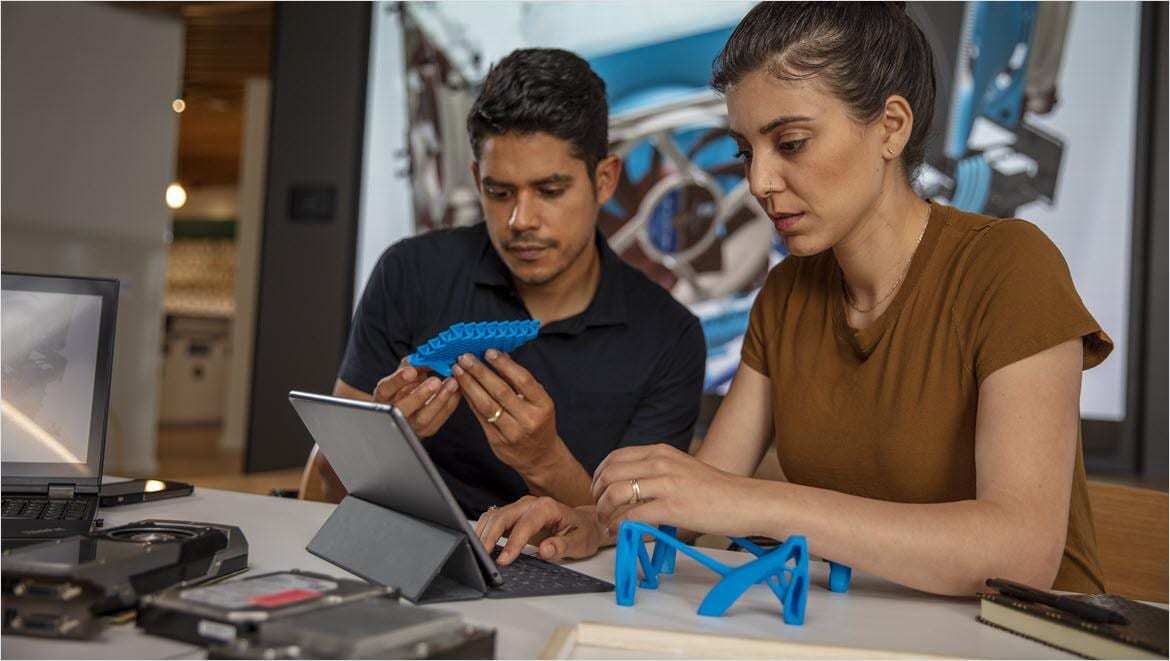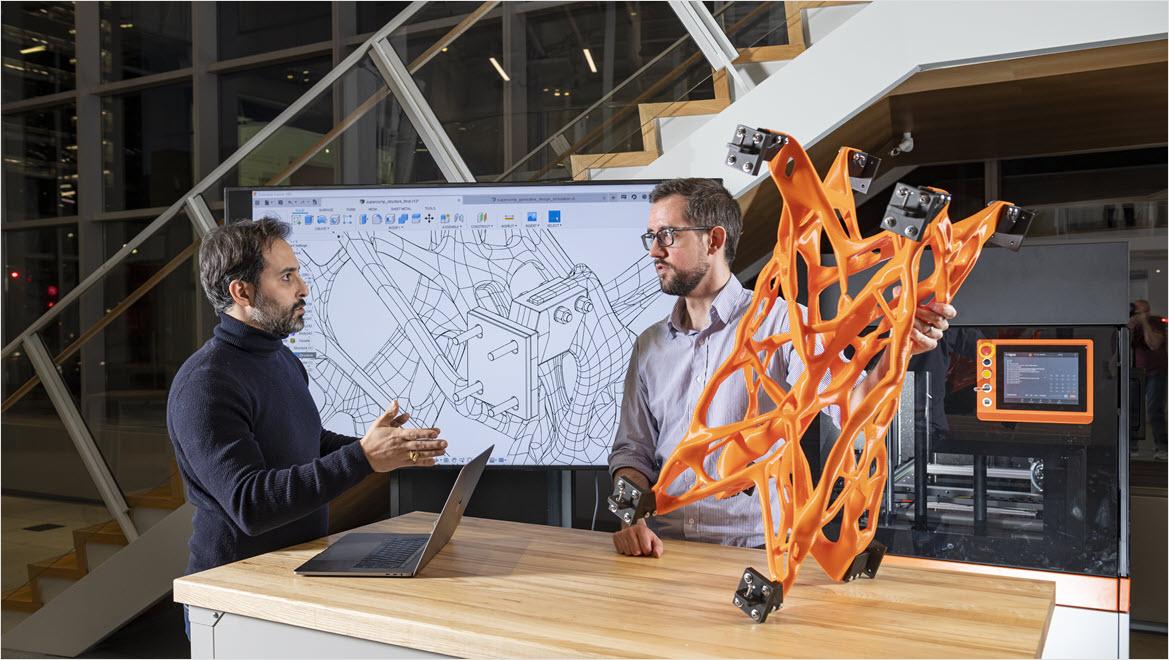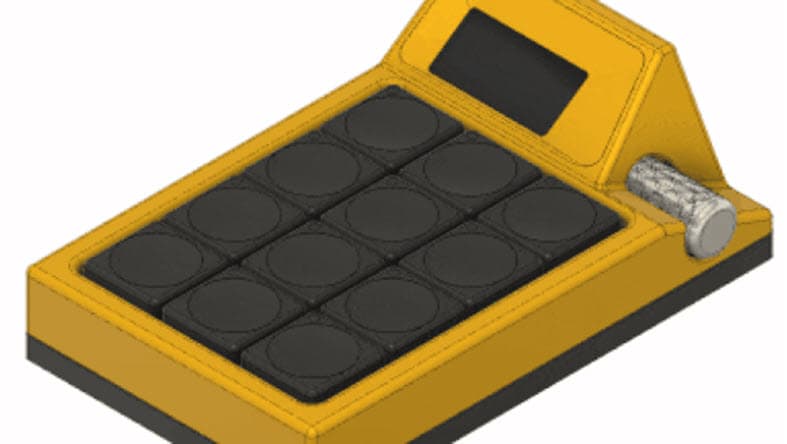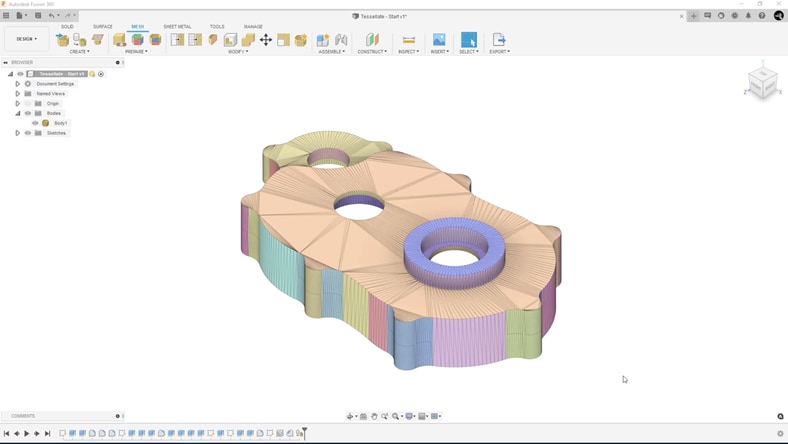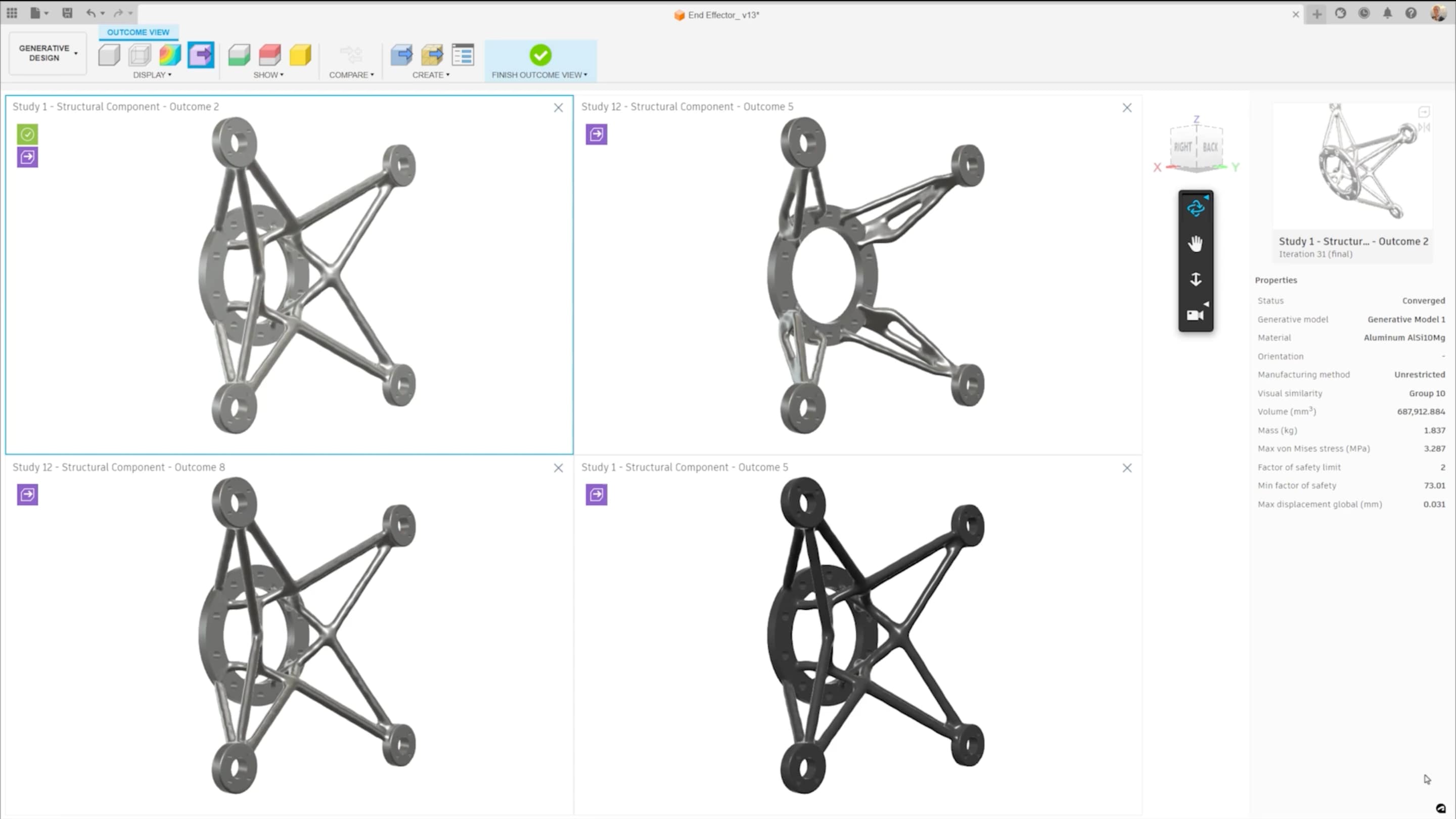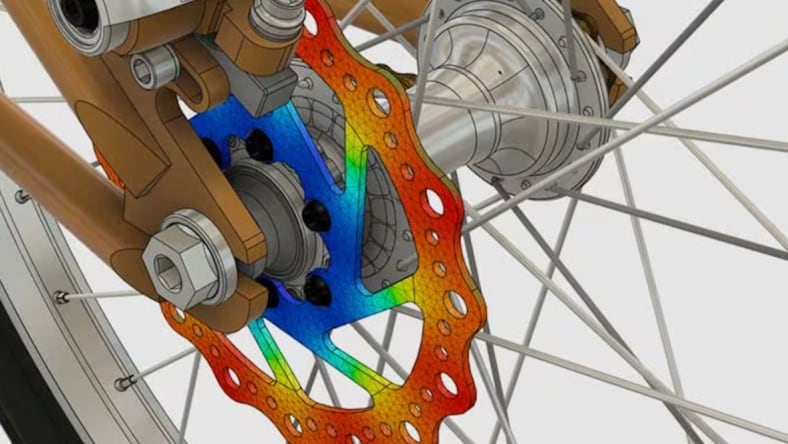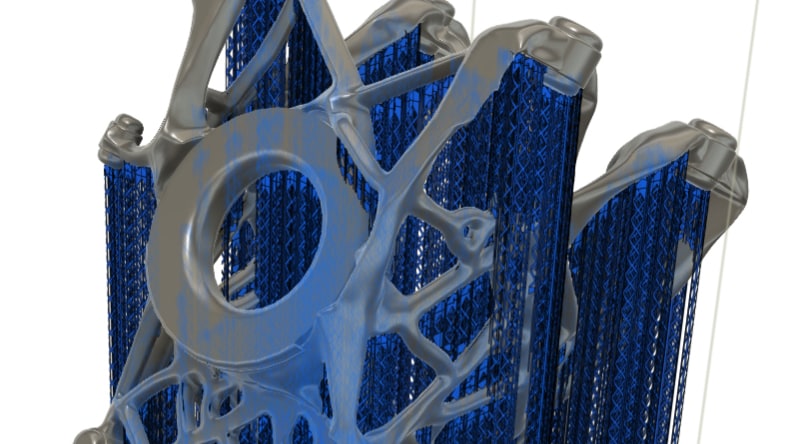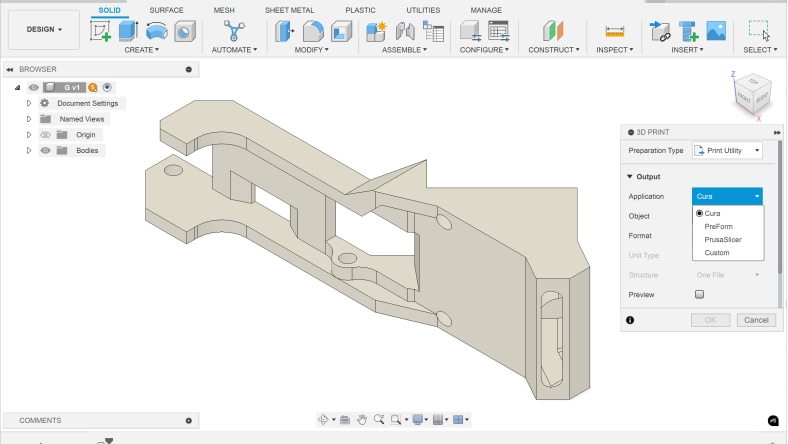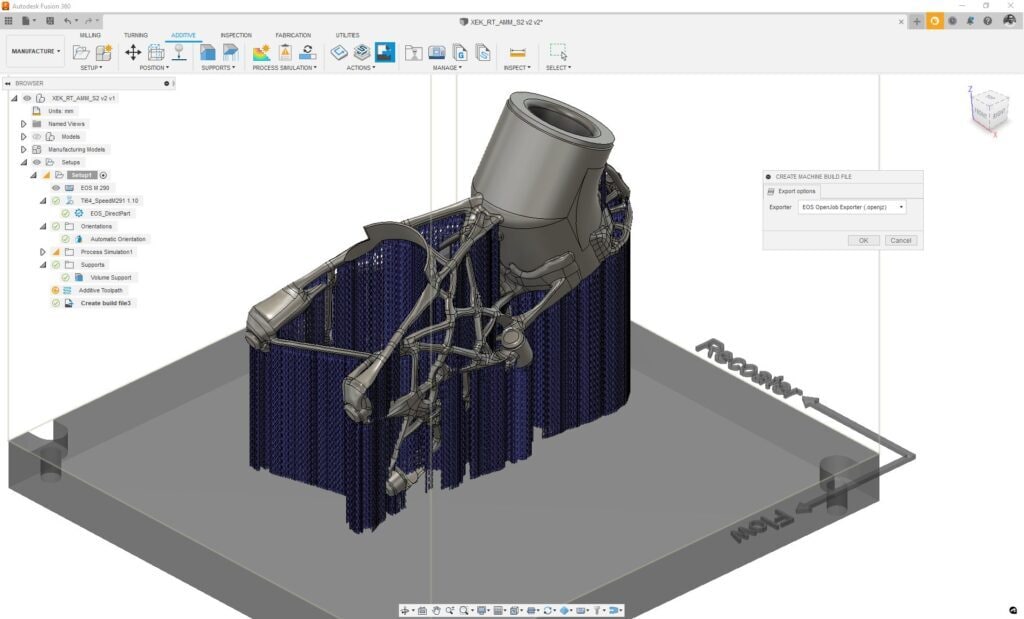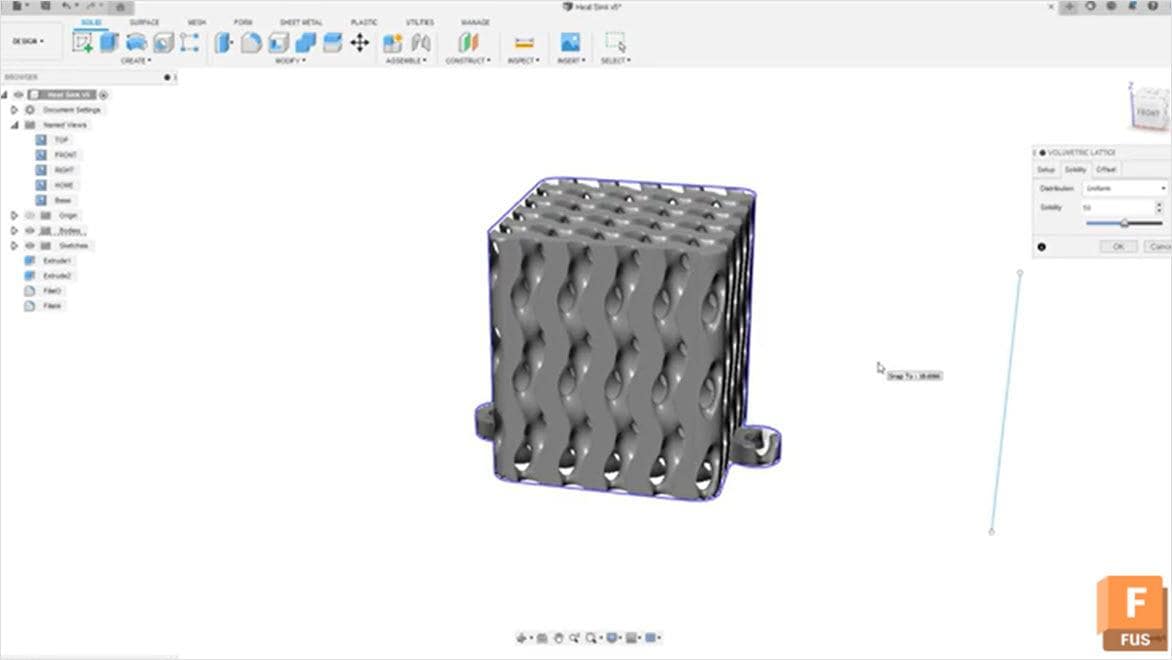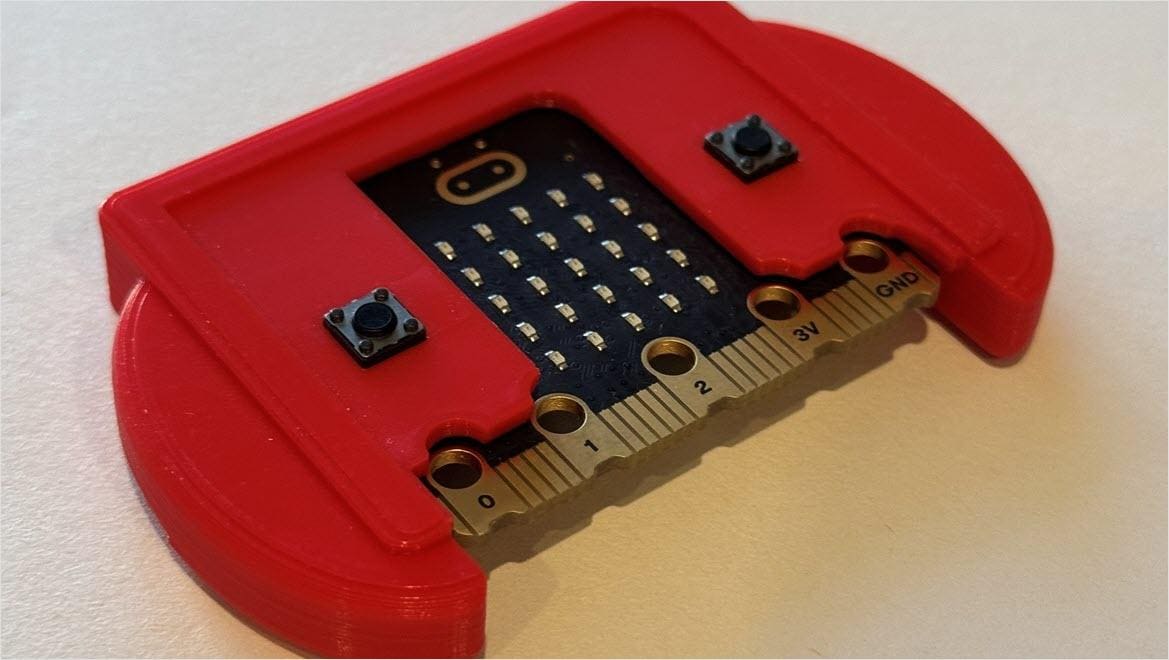& Construction

Integrated BIM tools, including Revit, AutoCAD, and Civil 3D
& Manufacturing

Professional CAD/CAM tools built on Inventor and AutoCAD
CAD software for 3D printing is essential for creating, modifying, and optimizing digital models that can be transformed into physical objects via 3D printing. It provides tools for designing intricate geometries, performing simulations to predict performance, and ensuring printability.
CAD for 3D printing also offers optimization features for light weighting parts while maintaining structural integrity, ultimately helping the transition from digital concept to tangible product. This integration of design, analysis, and manufacturing tools makes CAD software indispensable for efficient and precise 3D printing workflows.
Here are the core components of software for 3D printing.
CAD software for 3D printing should allow users to create and manipulate 3D models. They include sketching, parametric modeling, surface modeling, and solid modeling tools.
CAD software should allow the testing and validation of designs through simulations, such as stress analysis, thermal analysis, and fluid dynamics. This helps make sure models will perform as expected in real-world conditions.
Software for 3D printing typically supports meshing and exporting solid models in formats that are compatible with the proprietary slicer of a given 3D printer, such as STL, OBJ and 3MF. This makes sure that the digital design can be accurately translated into physical form.
Tools for optimizing a design, such as light-weighting parts while ensuring their structural integrity, and minimizing the need for support structures are critical when designing for additive manufacturing. Additional tools such as hollowing and latticing parts also help minimize material usage during 3D printing.
Some CAD software for 3D printing includes print preparation capabilities to orient parts, arrange them within the build volume of the printer, create support structures, and slice the model. Slicing involves dividing the 3D model into layers and generating the instructions (G-code, CLI, SLC) that the 3D printer will follow to build the object layer by layer. CAD software for 3D printing also transfer the 3D model data seamlessly to any 3rd party slicing software.
Software for 3D printing often includes features for collaboration, such as cloud-based storage, version control, and sharing capabilities. This allows multiple users to work on the same project and streamline the design-to-print workflow.
Autodesk Fusion offers a comprehensive and integrated solution that streamlines the entire design-to-print workflow. It combines advanced design, simulation, and manufacturing tools in a single solution, allowing users to create intricate and precise 3D models effortlessly. Its robust simulation capabilities help identify and resolve potential issues before printing, ensuring optimal performance and reducing material waste.
Fusion also has built-in print preparation and slicer capabilities and supports seamless file export in printer-compatible formats. Fusion also can transfer 3D models to most common slicers such as Cura, PrusaSlicer, PreForm, and Bambu Studio simplifying the print preparation process for 3D printing. Further, cloud-based collaboration features facilitate real-time teamwork and version control, making it an ideal choice for both individual designers and teams looking to enhance efficiency and innovation in their 3D printing projects.
Optimize part design and performance with unlimited cloud solves for generative design, FEA, electronic cooling, injection molding, and more.
Unlock additional capabilities for 3 to 5-axis CNC machining, sheet-based nesting and fabrication, and metals-based additive manufacturing.
Autodesk Fusion supports a variety of features that enhance the 3D printing experience, including:
Create models with configurable parameters, in order to easily adjust dimensions and features without starting from scratch.
Import and automatically repair mesh files. Edit them as mesh objects or convert them to solid models for further modification, ensuring that your models are print-ready and free from errors that could affect the print quality.
Optimize the design for weight reduction and material efficiency while maintaining structural integrity, leading to more efficient and cost-effective prints.
Automating the creation of optimized, innovative product designs that meet specific performance, material, and manufacturing requirements. Accelerate product development and promote sustainability through material and energy efficiency.
Test the mechanical properties and performance of designs, helping to identify and fix potential issues before printing.
Use the Manufacture workspace to select your machine, print settings. Select parts to print and orient them to minimize support structures, post processing requirements and cost. Automatically arrange your parts within the build area or volume of your printer. Generate support structures when necessary.
Slice your additive setup to generate and simulate the additive toolpath. Animate the build process layer by layer to visualize each toolpath type, such as perimeter, infill and support. Verify that the build is as expected before saving the toolpath in a printer compatible format such as G-Code, SLC, or CLI.
Save your models in slicer-compatible formats such as STL, OBJ, STEP or 3MF. Connect Fusion with cloud enabled 3D printer applications such as Ultimaker Digital Factory, or Markforged Eiger. Upload your models and streamline design to print workflows.
Download and install hardware specific apps from the Autodesk App Store to connect Fusion with your additive machine and initiate 3D prints directly within Fusion.
Additive setups created with Fusion can be sent to 3D printers from EOS, HP, Trumpf, Ultimaker and Markforged.
Use Fusion to hollow out solid or a mesh models to reduce material usage during rapid prototyping. Design drainage holes to minimize printing defects from cupping effects and remove trapped powder from hollow parts. Model plugs for post processing your parts. Add lattice structures to maintain structural integrity and ensure printability using volumetric modeling tools.
Download and install software specific apps from the Autodesk App Store to import volumetric models created using other implicit modeling software such as nTop and Metafold and use Fusion for additively manufacturing such models.
Tinkercad is changing the world of 3D printing in education with its intuitive, user-friendly interface designed for learners of all ages. As a cloud-based application, Tinkercad requires no installation, making it easily accessible from any device with an internet connection. This simplicity allows students and educators to dive straight into creating 3D models without the steep learning curve associated with more complex CAD software.
Tinkercad's drag-and-drop functionality and pre-defined shapes enable beginners to quickly grasp the basics of 3D design, while its advanced features offer deeper exploration for more experienced users. The platform also supports a collaborative learning environment, where students can share their projects and gain feedback from peers and teachers. By bridging the gap between creative ideas and tangible prototypes, Tinkercad empowers students to bring their visions to life, fostering critical thinking, problem-solving, and innovation in the classroom.
Software for 3D printing is applicable in various industries and engineering processes. Some common examples include:
Automotive companies use CAD software for 3D printing to design and prototype vehicle components, custom parts, and tooling. 3D printing allows for rapid iteration and testing, reducing development time and costs.
The architecture industry uses software for 3D printing to create detailed architectural models, building components, and entire structures. 3D printing enhances visualization and enables the production of intricate designs and custom elements.
CAD for 3D printing helps in the design and prototyping of new electronic devices, housings, and components. This accelerates the development process and allows for quick adjustments based on user feedback.
Software for 3D printing is essential for creating custom medical devices, prosthetics, implants, and anatomical models for surgical planning and training. CAD enables precise customization to fit individual patient needs.
The aerospace industry utilizes CAD for 3D printing for designing lightweight, complex parts and components that meet strict performance and safety standards. 3D printing helps in producing parts with intricate geometries that are difficult to achieve with traditional manufacturing.
CAD software for 3D printing is used for designing and producing custom jewelry, accessories, and fashion pieces. Designers can experiment with complex patterns and structures, creating unique and personalized items.
Amidst a global healthcare crisis, 3D printing has become a flexible solution to modern medical challenges.
Fusion supports Metal Powderbed Fusion (MPBF), which encapsulates all metal powderbed technologies (SLM, DMLS, and EBM).
The Markforged Add-In for Autodesk Fusion provides a seamless bridge between Autodesk Fusion and Markforged’s Eiger, a powerful online 3D printing platform.
Autodesk Fusion is an excellent choice for 3D printing due to its comprehensive toolset that covers design, engineering, and manufacturing stages, including parametric modeling and integrated slicer for print preparation. It supports cloud-based collaboration, making it ideal for team projects, and offers a free version for hobbyists and students. The software's simulation and analysis tools help predict print performance, while its compatibility with various file formats and direct mesh editing capabilities streamline the 3D printing workflow. Additionally, Fusion offers specific additive manufacturing features and has a large support community, making it accessible and versatile for both beginners and professionals.
3D printing CAD (Computer-Aided Design) involves using specialized software to create detailed digital models that can be converted into physical objects through 3D printing. This process starts with designing a 3D object using CAD software, where users can create, modify, and optimize their models with precision. The software allows for parametric modeling, enabling easy adjustments and iterations. Once the design is finalized, it is exported as a file format such as STL, OBJ , STEP or 3MF, which are compatible with most 3D printers and their dedicated slicers. The CAD model is then sliced into layers using slicing software, generating instructions for the 3D printer to build the object layer by layer. CAD tools also offer features for analyzing and simulating the design. This helps with printability and structural integrity, making 3D printing CAD essential for both prototyping and manufacturing complex parts.
CAD software for 3D printing can greatly enhance your manufacturing process by streamlining the design-to-production workflow, allowing for rapid prototyping, and facilitating precise customization. It enables you to create detailed and complex models with high accuracy, which can be easily adjusted and optimized through parametric design tools. This reduces the time and cost associated with traditional manufacturing methods. Additionally, CAD software integrates with simulation tools to predict and address potential issues before printing, ensuring better quality and durability of the final product.
Using 3D printer CAD software offers several advantages:
1. Precision and Accuracy: CAD software allows for the creation of highly detailed and accurate digital models, ensuring that the final 3D printed objects are precise and meet exact specifications, which is crucial for engineering and manufacturing processes.
2. Rapid Prototyping: It enables quick design iterations and prototyping, allowing designers and engineers to test and refine their concepts swiftly. This reduces development time and costs compared to traditional prototyping methods.
3. Customization and Flexibility: CAD software facilitates easy customization of designs, enabling tailored solutions for specific needs or personalized products. Parametric modeling allows for adjustments without starting from scratch, offering flexibility in design modifications.
4. Error Reduction: Integrated simulation and analysis tools help identify and correct potential design flaws before printing, minimizing material waste and reducing the likelihood of print failures. This enhances the overall quality and reliability of the final product.
5. Enhanced Collaboration: CAD software solutions, like Autodesk Fusion, offer cloud-based collaboration features, allowing multiple team members to work on the same project in real time. This improves communication, speeds up decision-making, and makes sure that everyone is aligned throughout the design and production process.
When choosing CAD software for 3D printing, consider the following factors:
1. Ease of Use: Evaluate the software’s user interface and learning curve. Beginners might prefer more intuitive and user-friendly options, while experienced users could benefit from more advanced and feature-rich software.
2. Features and Capabilities: Make sure that the software offers essential tools for 3D modeling, such as parametric design, mesh editing, and support for complex geometries. Additional features like simulation, analysis, and integrated CAM tools can further enhance the design-to-production workflow.
3. File Compatibility: Check for compatibility with various file formats, such as OBJ and STL, commonly used in 3D printing. The ability to import and export different file types helps encourage flexibility and interoperability with other software and 3D printers.
4. Cost: Consider your budget and the cost of the software. Some CAD tools are free or offer free versions for students and hobbyists, while others might require a subscription or one-time purchase, especially for professional-grade features.
5. Community and Support: Look for software with a strong user community and good support resources, such as tutorials, forums, and customer service. This can be invaluable for troubleshooting, learning new techniques, and getting the most out of the software.
6. Cloud and Collaboration Features: If you work in a team or need to collaborate remotely, cloud-based software with real-time collaboration features can be highly beneficial, enabling multiple users to work together seamlessly on the same project.
7. Hardware Requirements: Check the software’s system requirements to make sure your computer hardware is compatible and capable of running the software efficiently without performance issues.
8. Customization and Flexibility: The ability to customize the software to fit your specific workflow or project needs can be a significant advantage. Look for software that allows for plugin integration or has adaptable features.
